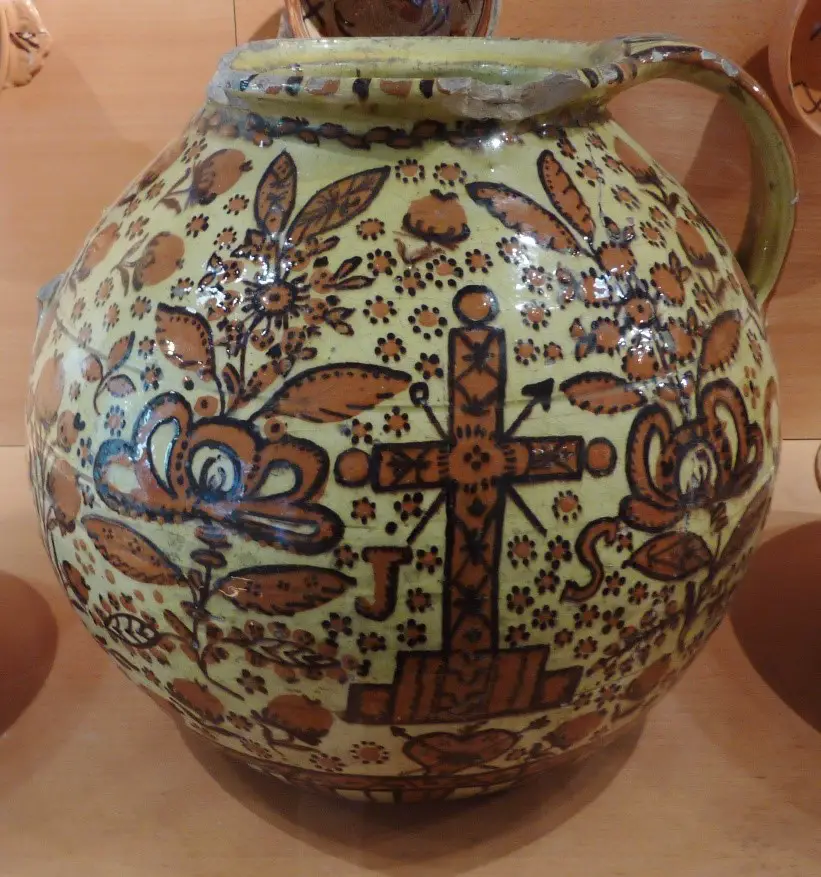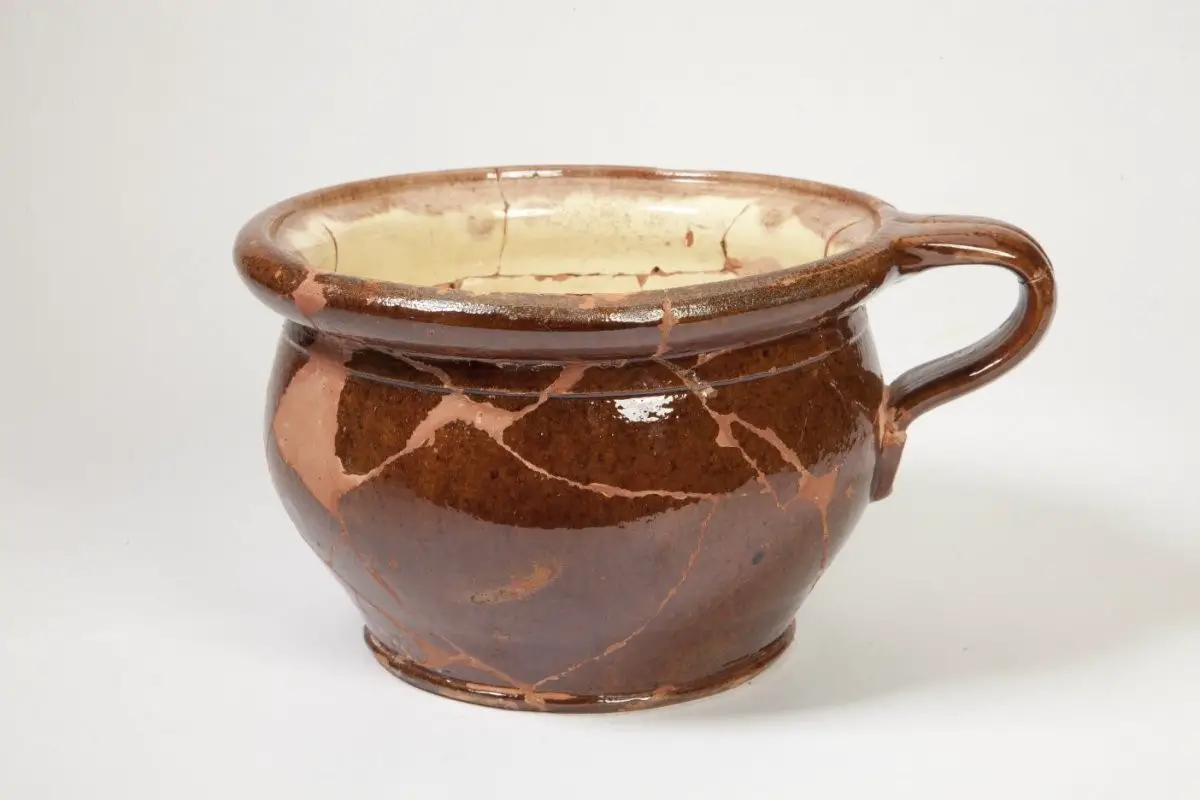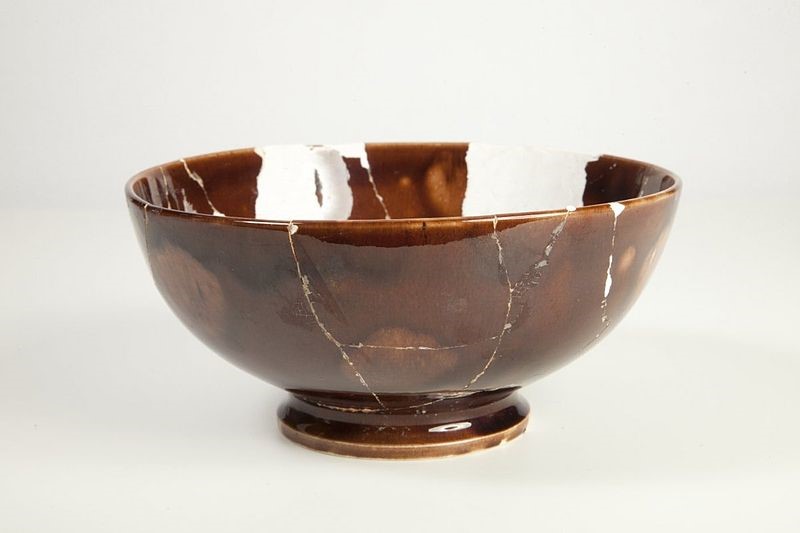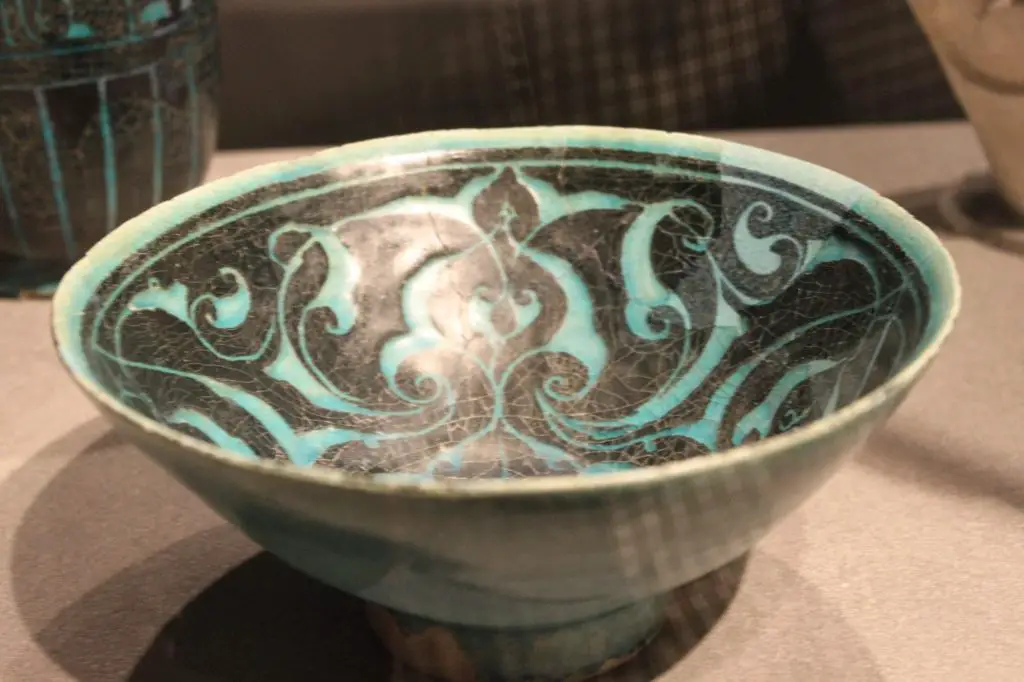You may have heard the word engobe thrown around in pottery. This is another type of means to decorate and put pottery pieces into place, similar to a slip. But, did you know that they are a bit different? Did you know you can decorate with them to create some amazing and killer pieces? When you’re looking to learn how to decorate pottery, engobes are quite cool, and this article will discuss what they are, why they matter, and some important things that you can learn from them.

Just what is it?
Engobes are similar in many cases to slips, that’s what many begin to realize. However, engobes are a bit different, and that’s because of the following:
- They use fritted material
- They don’t shrink as much
- They have more changes
- They’re used on bisque pottery
Since it does reduce the shrinkage of this, you want to use it on something that’s already been fired to create a better result.
They are pretty old, dating back to about 3000 BC, which in turn involved finding pottery that involves this kind of coloring, which is quite cool.

What’s the Difference?
So, you may wonder what’s the difference between engobes and slips. You might also hear about glazes as well, and why they are similar to the other ones. How do you tell the difference though? Well, you’re about to find out. This section will discuss all this, and by the end of it, you’ll be able to understand the fine lines between each of them, and what they all mean.
Slips, in essence, are as follows:
- They’re the simplest in chemical makeup, really just clay and water mixed
- They’re probably the easiest to make
- They’re usually used with a colorant as well, including oxides and stains to give it a unique color
Now, an engobe is similar to a slip, but there are a few differences, and they are as follows:
- An engobe has less clay than a slip does
- There is more flux and silica in there
Flux and silica are important for making clay pieces work. flux keeps the clay liquid, and it will lower the point of melting for silica, which in turn will help it all mesh nicely together
Now silica is a way to form glass, and in essence, it’s an oxide that forms glass pretty readily, and it’s made up of quartz that is grown into a powder that’s quite fine.
Now, the properties that engobes involve are kind of that middle point between glazes and slips, especially in terms of the way that it kind of composing.
Now a glaze is, in essence, the following:
- A mixture of powdered materials
- Typically the pre-melted glass is made into a slip
- It often creates a glossy coating
This is ultimately one of the key differences. With a ceramic glaze, you get that glossy coating when you fire it, or even when it’s dried. You can see it when you’re done.
In many cases, this can ultimately help tell the difference between pieces that are finished as well, since the glaze tends to have a finish that’s quite glossier than the other ones that are in slips and engobes. It might seem complicated, but one of them looks a lot glossier than the other two, so it can give that extra lit, finish if that’s what you’re looking for.
Engobes are probably the most versatile in terms of how you use them, and we will discuss how you can apply engobes to your art, and some other important elements that can help with changing this.
When to Use?
You may wonder when it’s good to use Engobes, and the answer is really in virtually anything. They are super versatile, they’re an important part of work, and they can be quite helpful for many reasons.
That’s because they can do the following:
- It gives the depth of the piece
- It gives the pieces more color
- The variety that’s created is much different
Now, engobes and slips alike are good in terms of not moving around when you fire them. You may realize as well that they’re good for intricate colors and different patterns. It’s quite interesting, and that’s because they work well to create a good sort of feeling and pattern. So, if you’re using it to create a design that’s much more detailed and one that creates a nice pattern, engobes are the way to go.
Slips are good too, but remember that they are somewhat stickier, due to the amount of clay that’s in there and it’s kind of the main difference that you may notice when you’re putting all of this together.
Now, engobes are known for their depth. When you use them, they give the impression that the piece is deeper than it is, which is often an artistic point that many artists love and enjoy. It also can create an interesting range of vision on the surface of the pot, and if you use different colors, it can create a multi-dimensional piece that can make it look even better than it did before.
Now, the nice part is, that you can actively use slips and engobes together if you want to. Why is that? Well, it’s because of the following:
- They’re virtually the same thing
- They’re made of a clay body
- The key difference is one of them is a bit more watery than the other one
However, if you’re going to be using both of these, you work with the slip first. You then coat it with the engobe. You want to make sure that if you’re going to put another covering on it, such as maybe a bit of an outer coating, you should make sure that you have it roughly leather hard before throwing it into the kiln.
If you’re going to single-fire, you need to use slips and engobes, since it will already have been fired. You can’t use the glaze on this beforehand, but rather the other two. You can mix all of these, so long as there aren’t any chemicals that work harshly together. You, in essence, can use this to give it a nice, glossy finish that will help make it look even better.

Ways to Apply It?
Now, you may wonder how to apply these. Well, with engobes, there is that element of creation that goes into it. slips are used for both decorative, and to glue it together, but engobes are really what shines in terms of trying to create some amazing pieces that involve lots of colors. Some ideas are as follows:
- Using a ton of colors to create a colorful and amazing piece
- Marbling your work to give it a nice and intricate texture
- Making cool patterns
- Using different vertical lines and such
- Creating pretty pictures and the like on your pieces of pottery, such as animals and plants
Now, if you do decide to do any of this, the first thing that you have to do is make sure that you have a piece with one full color done, especially with a wider brush. From there, you should make sure that any excess is then pulled off of there, and make sure that the lines are run down in another color. If you want to create different lines, one after another, one of the best ways to do it is the following:
- Get a squeeze bottle, or an old condiment bottle, rinse it out completely
- Get a nozzle that’s easy to apply to this
- Put the two colors in there, mixing them
- Add it to the bottle itself
- Squeeze it out, and you’ll see the design come out of there in a simple manner
- If you want to have it neater, you can always make the vertical lines, and then turn it around and do the same thing. It’s quite simple
Marbling your pieces does take some time, and you may notice that it’s not as easy as you think. But, if you’re ready to have the best and prettiest piece that you can have, you’ll be much happier if you try this.

Now, for those who want to paint, you can do a horizontal and vertical line design as well to create intricate designs with this. You can start with vertical lines horizontally, and then do it the other way. You can use zigzags, different circles, virtually whatever you want, so long as you’re happy with this design. It’s often something that you may want to try out if you’re struggling with trying to create a piece. If you don’t like it, you can quickly wipe it all off and then go on from there.
Other tips for painting
Now, with painting engobes onto pottery, you can do so much, including the following:
- Spots
- stripes
- Intricate designs
However, if you’re having issues with this, planning is a great step here. Planning is a big part of pottery, and it’s how you ensure that you make the best piece that you can have. However, you want to ensure that you are precise with this if you’re looking to create a piece with planning.
The best way to do it is to sit down, look at the piece, and figure out what you want to put into there. Your piece should be relatively leather-hard so far, so you can use pencils to make various markings on the pot initially to show what you want.
You can also create stencils that you want to use to lay them down on there. You can then draw it out with a pencil, or simply paint the slip or the engobe on top of there if that’s something that you like.
If you want to create another effective way to include pottery designs on your pieces, there is something called sponging. Sponging, in essence, is taking a sponge, putting it in the engobe, and from there, you add it to the piece in different types of textures. It’s a way to create different shades of colors as well because you can always press firmly onto there, or press it lightly to create a different design, and you can even make it with different types of colors too, to help create a beautiful and intricate piece.
With engobes, it’s one of the best ways to make some of the pieces that you do, and if you’re looking to take your designing to the next level, or if you want to include new and intricate decorations, engobes are the way to go, because they provide design ideas.
Engobes and various Underglazes
One thing that should be discussed is how the word engobe is used a lot, but sometimes people get a bit confused by this. we discussed the different ways that engobe can be used and the consistency, but lots of times, when you go to the store, you might see the word engobe on a lot of different pieces and chemicals that are a part of a decorative surface. One word, in particular, is underglaze.
Now, there are a couple of differences with this. underglaze is very similar since it’s colored with a stain or colorant, but there are a few differences:
- They use a covering glaze, involving less experimentation
- It contains a little bit less plastic clay
- It may be more like a glaze in terms of structure
Now that doesn’t mean that engobes are just like slips. Remember, slips are commonly used for greenware, but an engobe and underglaze are used in any stage possible, including those that are bisque fired. Engobes are often not used with a covering glaze as said before, whereas the underglaze will have an overglaze put on top of it. The differences are often not that much different, but it’s important to note that these are often used interchangeably but are in essence two different things in some cases.
Material Consistency
Different materials are used in many of these engobes. It’s not just one type of them. Here, we shall go over the six different groups of engobe materials, and why it’s important.
- Clays with kaolin are used in place of the ball clay to reduce the shrinkage
- Fluxes are used to lower the melting point of silica and to help with the stickiness
- Fillers, usually in many cases silica, and they’re used to help keep the stickiness there
- Hardeners including borax, gums, and calcium borate are used to help harden the material
- Opacifies such as tin, titanium, superpax, and zircopax are used to reduce the opacity of the engobe itself, darkening it
- Colorants that help to give the colors to them
In essence, all of the engobes that you use fall into these six categories, and you can take each of these materials and mix them to create some amazing pieces with it. for example, you can use kaolin, talc, calcined kaolin, calcium borate silica, zircopax, nepheline, and mix these to create different kinds of engobes that you can try out. From there you can apply them, fire them, and see the difference if you’re wondering what they can do.
With all of these, it’s important to make sure that you read the different ways
Three Reasons Why You Should Be Using Engobes
If this hasn’t immediately sold you on Engobes, it’s time to talk about what they can do for you. There are three things that this has to offer, and they are:
- Colors
- Versatility
- No streakiness
We will go over each of the different parts of this, and why they are ultimately better.
First, it’s their vibrancy of them. One thing that a lot of other different decorative coatings do that other types don’t, is that they don’t provide you with a ton of various options. Maybe you want to paint a beautiful and bright picture, but you just can’t with a bunch of drab colors. Well, why not try using an engobe to change that?
These colors pop, and I mean pop. You can get the typical red, blue, and green colors, but you can also get some amazing different ones, including:
- Baby pink
- Lime
- Mandarin orange
- Toasted coffee
- Lemon
And so much more. That’s what’s so nice about them, the fact that you’re actively getting some different shades that you can ultimately work with. Say goodbye to those drab and boring pieces that you may have done in the past and say hello to some gorgeous colors.
Then there is the fact that you don’t have to worry about streakiness anymore. That’s because you’ll be able to create beautiful and exact glaze lines with this. One of the things that engobes do better than other types of decorative colorings is the fact that you can paint something onto them, and it doesn’t look streaky and awkward. That’s one of the problems that I noticed with other different types, and it is quite simple.
You can get the smooth and solid coloring that you want in about two coatings max. You may even just need one. That’s a lot different from others, and it’s quite nice. Plus, you can do the following:
- Combine colors to make patterns
- Add light colors over darker ones
The latter is super nice because if you’ve ever worked with other types of decorative colorings, you might notice that when they get fired…they look bad. That’s often a major complaint that many have, and that’s a problem that many people notice with other types of decorative colorings, including slips. But, with this, you’ll be able to create some amazing pieces and some vibrant, bright colors that work for you. It’s so easy to apply, and you can say goodbye to those awkward, ugly colors that just don’t look right.
Finally, they’re super versatile. You can see these on the following:
- Greenware
- Bisqueware
- Walk-in projects
- Anything really that needs a cool addition
If you want to use these, it creates a beautiful result, and when it’s fired, it has the same vibrant colors that you want. even when it’s not fired, you will see the beautiful design on the wet clay, and with just a coat or two before firing, it definitely can create some amazing projects.
Plus, if you want to make a matte finish on everything, you can use an engobe to do so. If you want something more vibrant and glossy, you can do that as well. plus, these are food-safe, and you’ll like them. You can also put a clear glaze on top of there if you want to create a glossier finish, and it definitely will make a difference. The possibilities of this are endless, and you too can understand the joys and the fun of using an engobe to help make your pottery stand out and shine.
The article discussed everything that you need to know about engobes, why they’re important, and the differences between each of these. So now that you know all of this, you can now take the adventure with you, and start to create your pottery pieces with some pretty engobes. It’s probably one of the best finishes to use, and it’s a way to truly master the art of decorating your pottery pieces in the best way possible, and a surefire way to create some amazing items that will look good, and items that you’ll be proud of.







